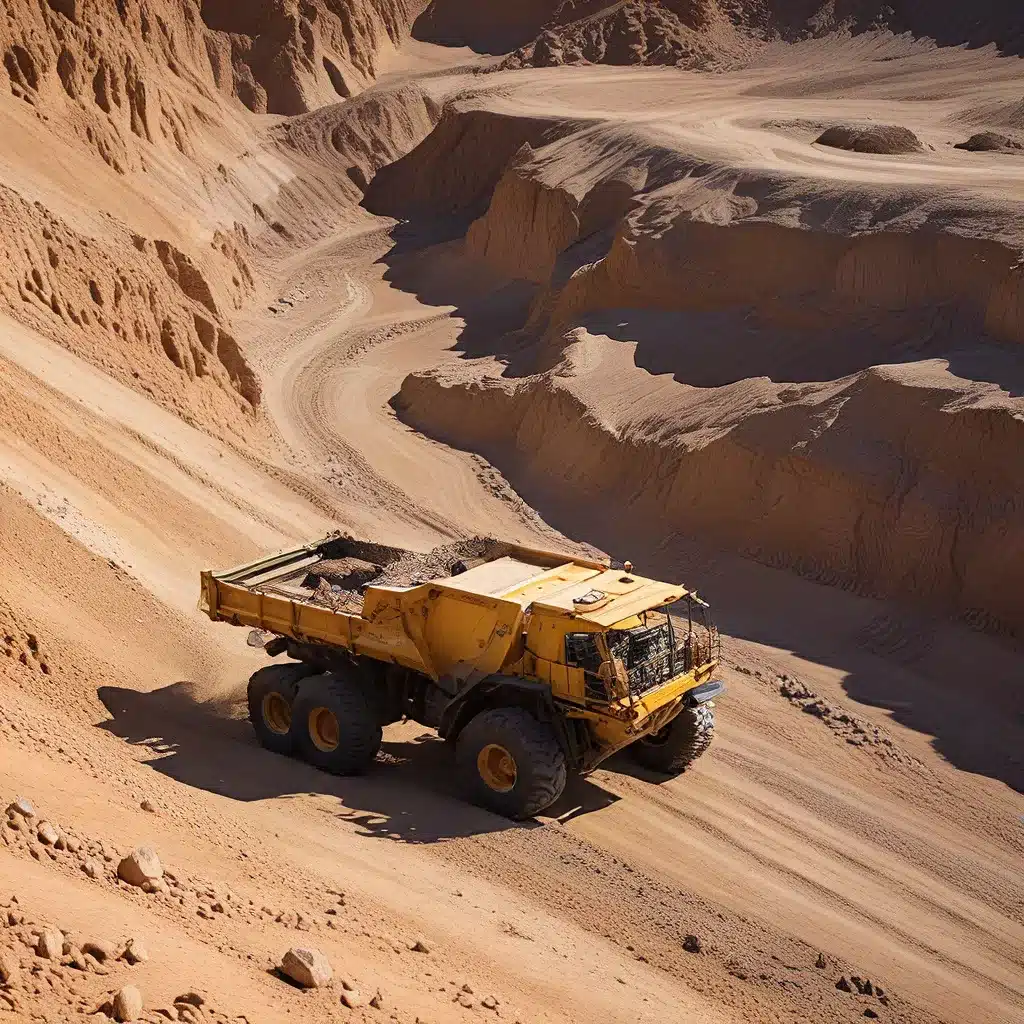
The mining industry has undergone a significant transformation in recent years, driven by the emergence of autonomous mining trucks and robots that are replacing traditional manual methods with highly automated processes. This technological advancement has not only improved operational efficiency but has also prioritized safety and reduced environmental impact.
Automated Mining: Reshaping the Industry
At the heart of this transformation lies smart mine technology, which integrates artificial intelligence (AI), internet of things (IoT), automation, and data analytics into existing mining operations. These advanced technologies are enabling mining companies to streamline their processes, enhance safety, and boost productivity.
One of the key components of smart mine technology is autonomous hauling systems (AHS), which use cutting-edge features such as GPS, radar, and lidar to automate the transportation of materials within mining sites. These systems operate continuously, optimizing routes, minimizing downtime, and significantly increasing output. Rio Tinto Group, an Australian-based mining company, has become the first in the world to transport all of its ore via autonomous vehicles, safely hauling 200 million metric tons of iron ore over six years.
In addition to autonomous hauling, automated mining trucks equipped with advanced sensors, GPS, and onboard computers are also playing a crucial role in the industry’s modernization. These self-driving vehicles navigate terrain, avoid obstacles, and efficiently execute tasks like material transport, all while enhancing safety by reducing human exposure to dangerous areas and driving cost savings through reduced labor and fuel costs.
Automation and Robotics in Mining
Automation and robotics are transforming various aspects of mining operations, including drilling, hazard monitoring, and mine inspection. Automated drilling systems, sometimes referred to as drilling robots, leverage advanced technology to identify the presence and distribution of valuable minerals and ore deposits, enabling them to operate continuously and with consistent accuracy and speed. These systems not only increase the overall output of mining operations but also enhance safety by reducing the need for human involvement in potentially hazardous areas.
Another vital technology in the mining sector is hazard monitoring robots, which are deployed to detect and mitigate potential risks, protecting both workers and equipment. These specialized machines can access areas deemed too dangerous for human workers, such as confined spaces, unstable terrain, and areas with high levels of toxic gases. By efficiently monitoring the environment for potential dangers, these robots can provide real-time data and alerts, ensuring the safety of mining personnel.
The Role of Artificial Intelligence and Industrial IoT
Artificial intelligence (AI) plays a crucial role in enhancing productivity and safety in the mining industry. AI-powered technologies are used to develop automated mining trucks and drilling systems, enabling these machines to identify their surroundings and make informed decisions based on their environment. Additionally, AI algorithms are employed for predictive maintenance, analyzing equipment sensor data to forecast potential failures and fine-tune maintenance schedules, as well as for ore grade estimation, helping organizations determine the concentration of valuable minerals and metals within a deposit.
Industrial IoT (IIoT) technology, on the other hand, involves the use of connected devices and sensors to collect and exchange data in real-time. Sensors installed on machinery and infrastructure gather data on factors such as temperature, pressure, and vibration, providing insights into equipment performance and health. By leveraging IIoT, mining companies can facilitate remote monitoring, predictive maintenance, and better decision-making by refining mining processes. Furthermore, IIoT seamlessly integrates with digital twin technology, creating digital replicas of mining operations to optimize processes, simulate scenarios, and predict outcomes.
Enhancing Safety and Sustainability
The integration of automation and robotics in mining has had a significant impact on worker safety. By delegating hazardous tasks such as hauling and drilling to autonomous systems, mining companies can reduce the need for human intervention in dangerous environments, potentially reducing fatalities by more than 50%. Mining companies like Randgold Resources and Anglogold Ashanti have implemented autonomous loaders at their mining sites in Africa, which has led to a 29% reduction in their quarterly injury rate.
Beyond safety, these advanced technologies are also helping to reduce the environmental impact of mining operations. Autonomous mining equipment operates with greater precision and control, minimizing the disturbance to ecosystems and surrounding environments. Goldcorp, a Canadian-based mining company, has fully automated its underground mine, resulting in an impressive 70% reduction in greenhouse gas emissions.
Optimizing Supply Chains and Boosting Productivity
The deployment of autonomous mining equipment and systems has also had a positive impact on supply chain efficiency and productivity. Automated systems can perform tasks non-stop, 24/7, streamlining the movement of materials within mining sites and reducing delays and bottlenecks in the supply chain. This, in turn, contributes to smoother operations and fewer disruptions, leading to increased production volumes and enhanced overall output. In fact, mining automation has been proven to boost productivity by 5-10%, which roughly equates to opening a new mine per a typical company’s footprint.
The Future of Automated Mining and Beyond
As automation in mining continues to evolve, it has sparked discussions regarding its potential application in space mining endeavors. While still in the early stages, the concept of extracting valuable resources from asteroids and the moon has become a topic of increasing interest. Companies like the Asteroid Mining Corporation are already developing specialized space mining robots to navigate the challenging terrain of space and extract minerals.
The advancements in sensor-enabled precision mining are not only transforming the traditional mining industry but are also paving the way for a more sustainable and efficient future. By embracing these cutting-edge technologies, mining companies can meet the evolving demands of the industry, enhance worker safety, minimize environmental impact, and stay competitive in the global market.
To learn more about the latest developments in sensor networks, IoT, and related technologies, visit sensor-networks.org.